Abstract
Penetrating ionizing radiation fairly uniformly puts all exposed molecules and cells at approximately equal risk for deleterious consequences. Thus, the original deposition of radiation energy (that is, the dose) is unaltered by metabolic characteristics of cells and tissue, unlike the situation for chemical agents. Intensely ionizing radiations, such as neutrons and alpha particles, are up to ten times more damaging than sparsely ionizing sources such as x-rays or gamma rays for equivalent doses. Furthermore, repair in cells and tissues can ameliorate the consequences of radiation doses delivered at lower rates by up to a factor of ten compared with comparable doses acutely delivered, especially for somatic (carcinogenic) and genetic effects from x- and gamma-irradiation exposure. Studies on irradiated laboratory animals or on people following occupational, medical or accidental exposures point to an average lifetime fatal cancer risk of about 1 × 10-4 per rem of dose (100 per 106 person-rem). Leukemia and lung, breast and thyroid cancer seem more likely than other types of cancer to be produced by radiation. Radiation exposures from natural sources (cosmic rays and terrestrial radioactivity) of about 0.1 rem per year yield a lifetime cancer risk about 0.1 percent of the normally occurring 20 percent risk of cancer death. An increase of about 1 percent per rem in fatal cancer risk, or 200 rem to double the “background” risk rate, is compared with an estimate of about 100 rem to double the genetic risk. Newer data suggest that the risks for low-level radiation are lower than risks estimated from data from high exposures and that the present 5 rem per year limit for workers is adequate.
Full text
PDF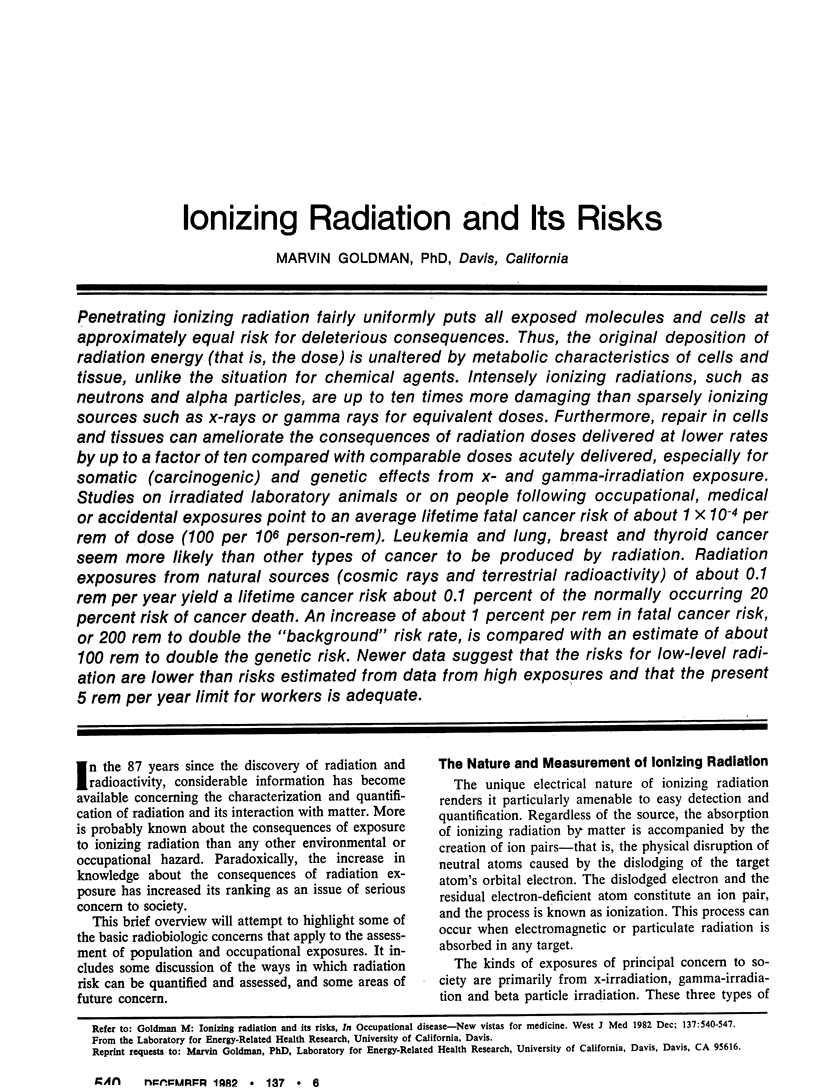
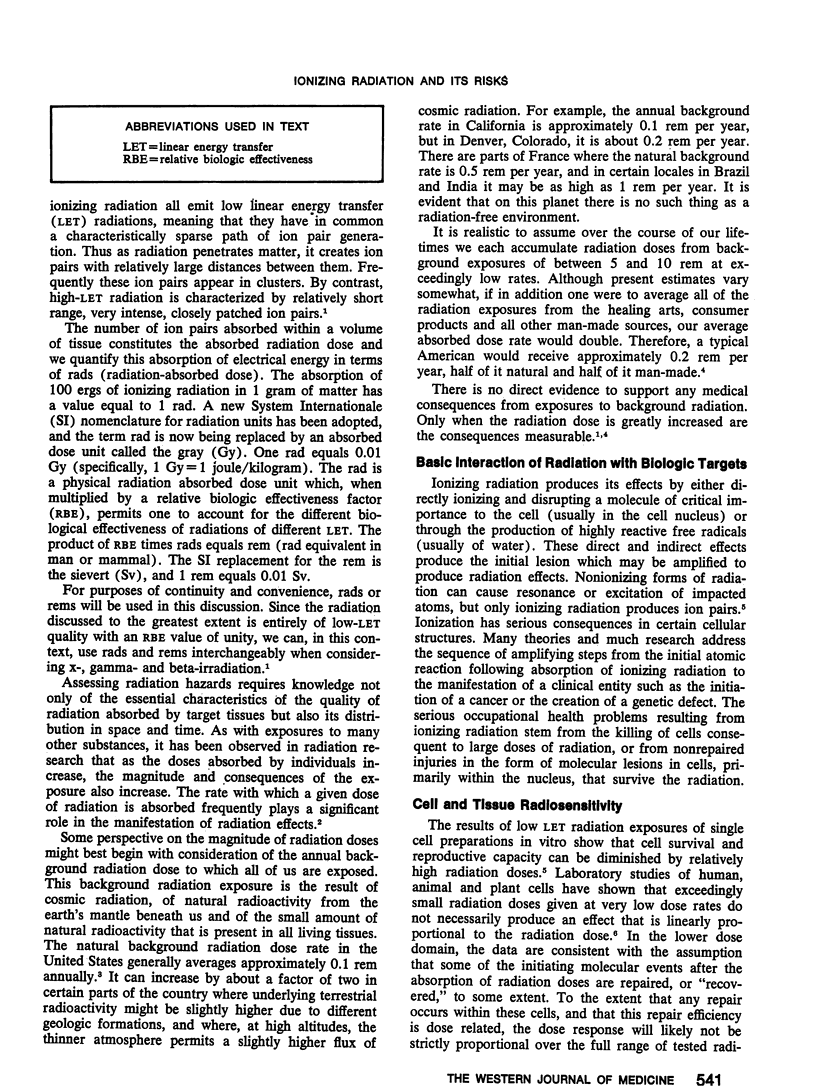
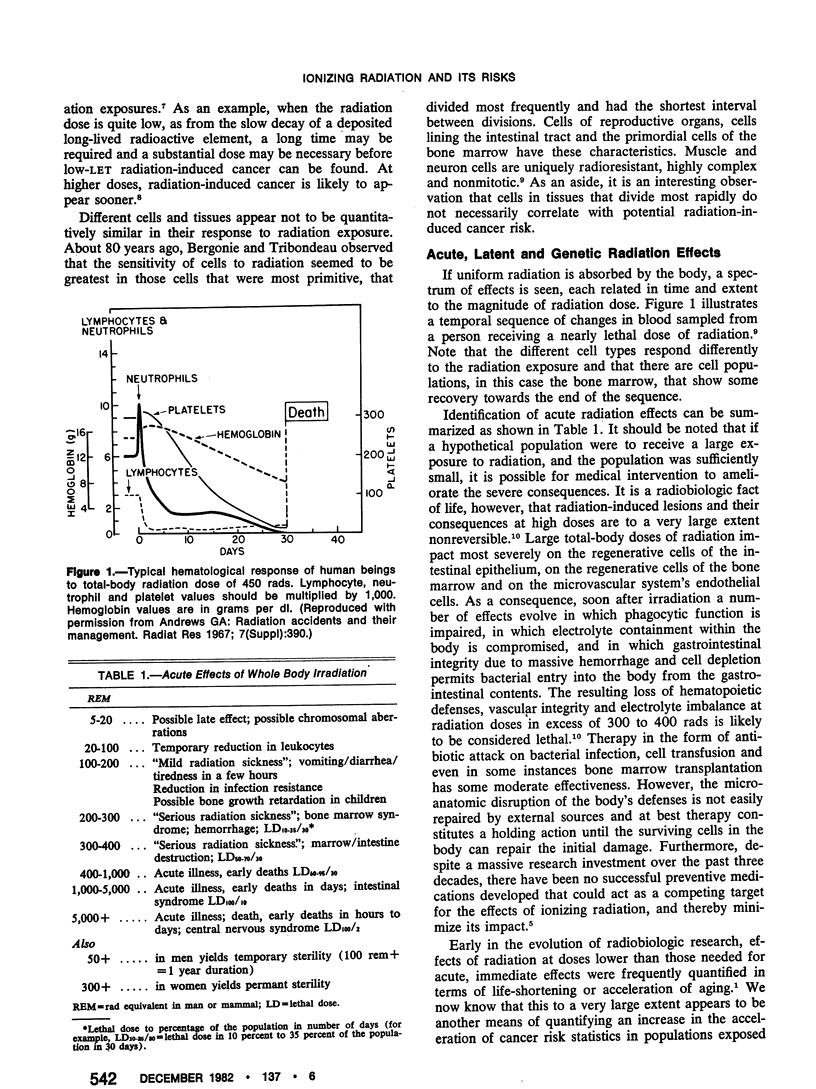
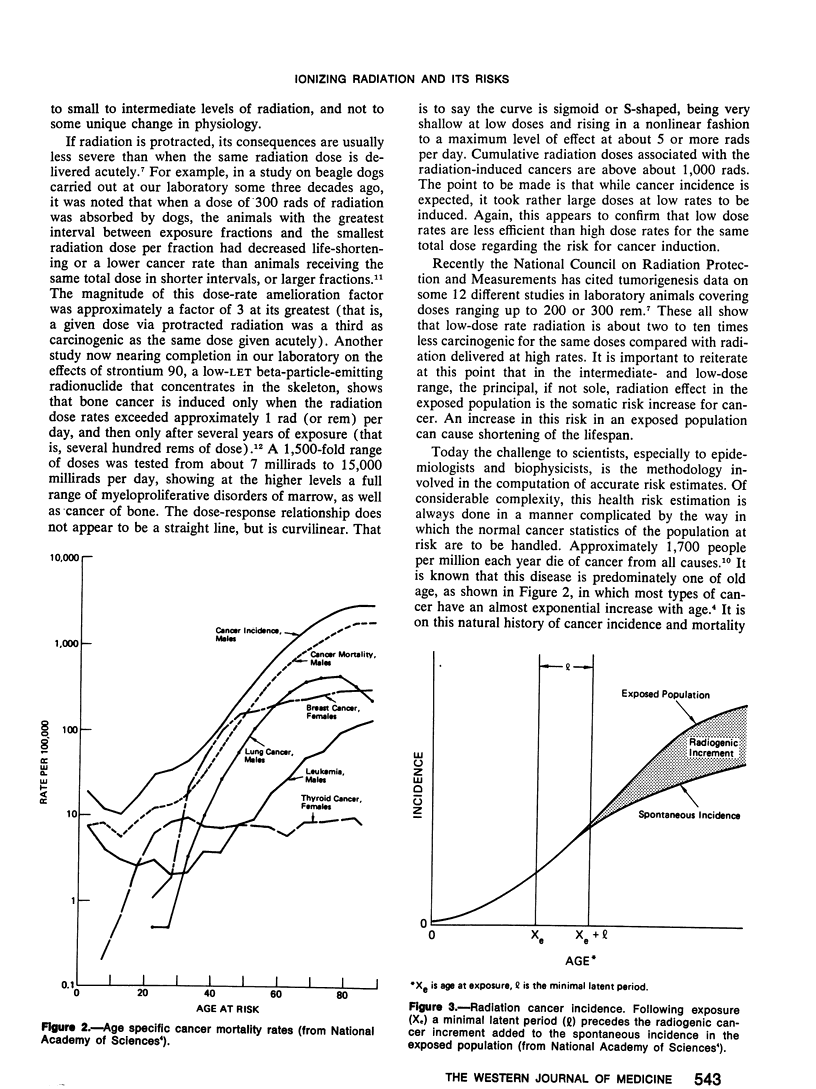
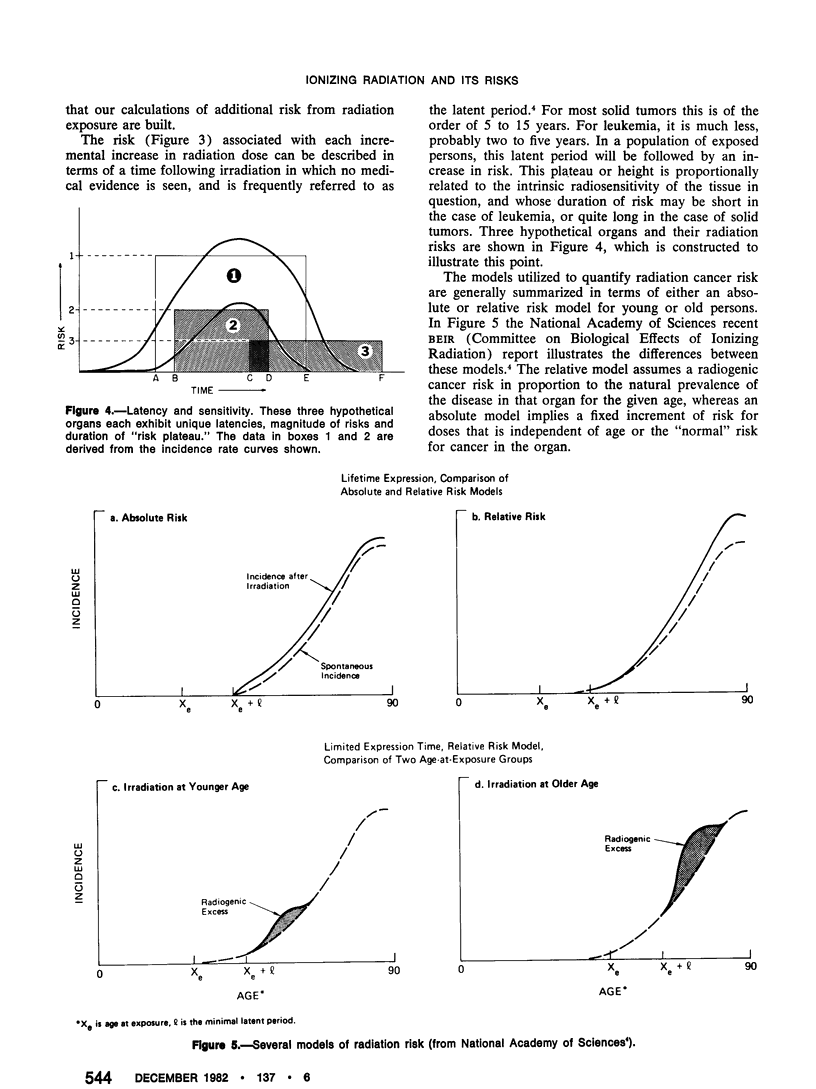
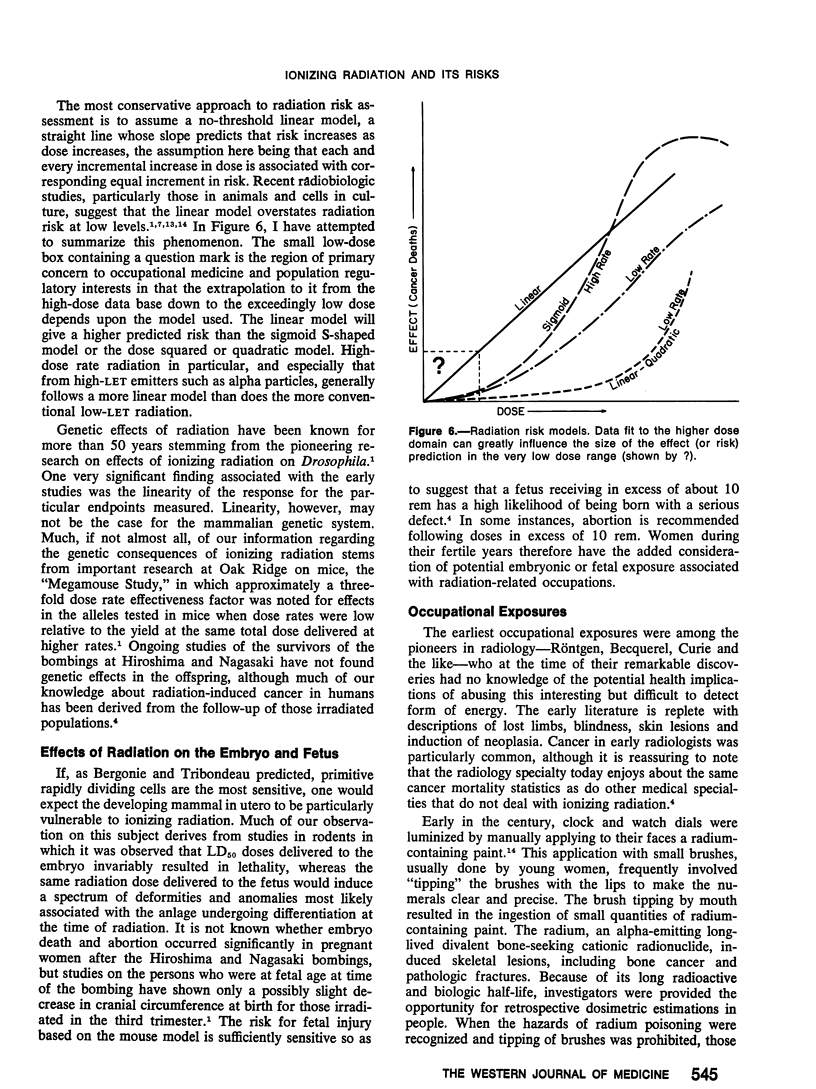
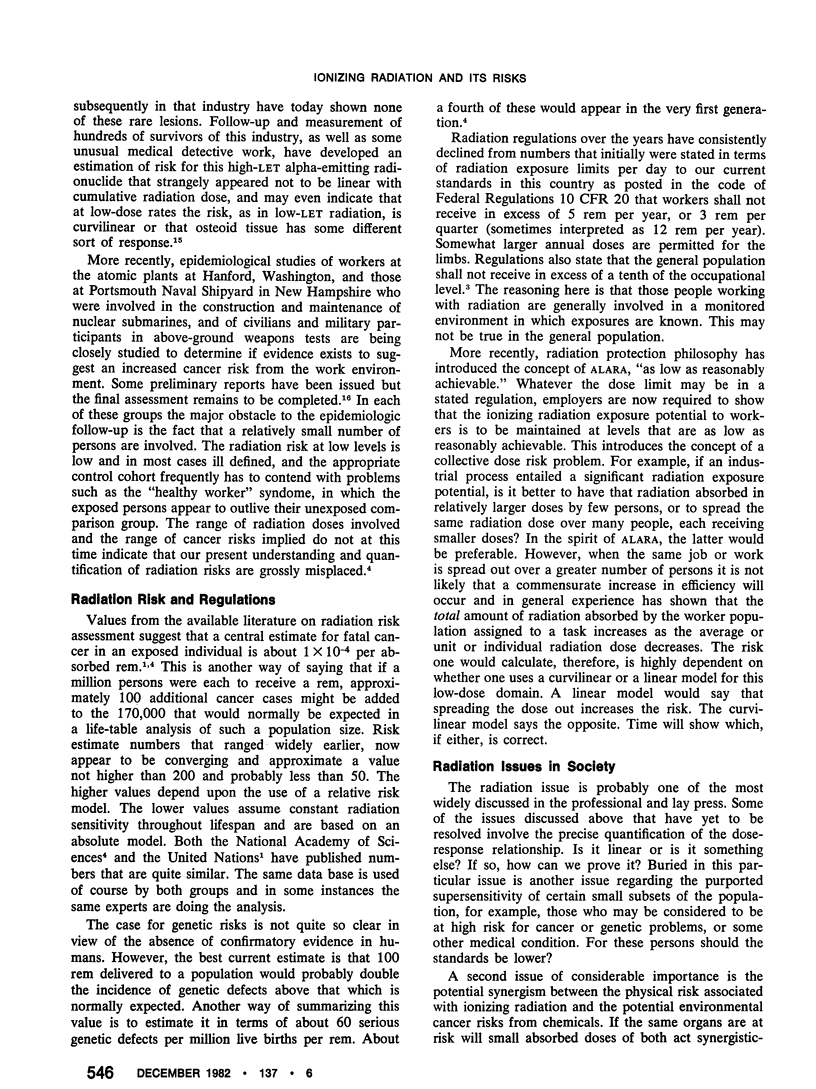
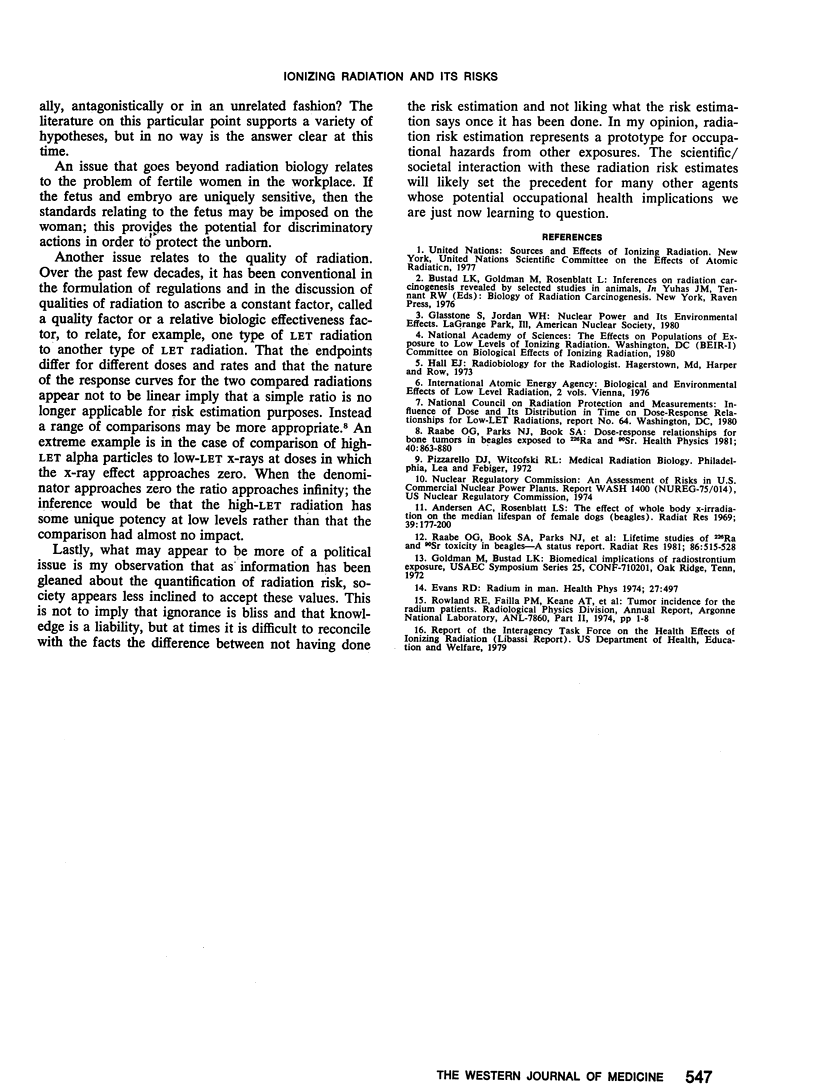
Selected References
These references are in PubMed. This may not be the complete list of references from this article.
- Andersen A. C., Rosenblatt L. S. The effect of whole-body x-irradiation on the median lifespan of female dogs (beagles). Radiat Res. 1969 Jul;39(1):177–200. [PubMed] [Google Scholar]
- Raabe O. G., Book S. A., Parks N. J., Chrisp C. E., Goldman M. Lifetime studies of 226Ra and 90Sr toxicity in beagles--a status report. Radiat Res. 1981 Jun;86(3):515–528. [PubMed] [Google Scholar]
- Raabe O. G., Parks N. J., Book S. A. Dose-response relationships for bone tumors in beagles exposed to 226Ra and 90Sr. Health Phys. 1981 Jun;40(6):863–880. doi: 10.1097/00004032-198106000-00009. [DOI] [PubMed] [Google Scholar]


